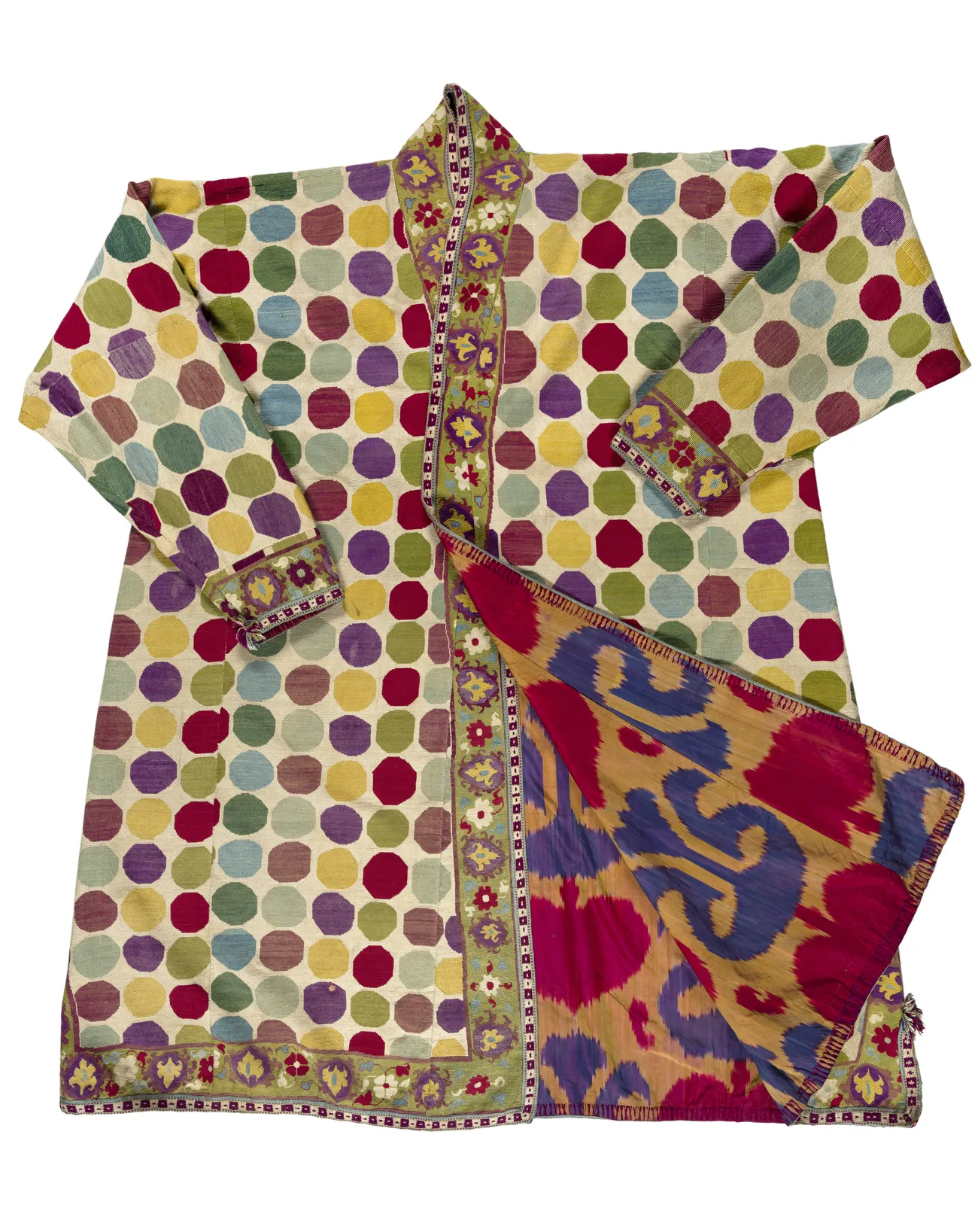It joined the Museum collection in 1949 as a gift from Mrs. E.H. Cook. Judging by the type of stitch (iroqi), the chapan w as made in Shahrisabz, which was famous for this kind of stitch. The base fabric is made of cotton, with silk threads used for embroidery. The embroidery is of superb quality: each square centimetre contains more than ten stitches, ideally even in shape, which completely cover the base fabric with tiny knobs. According to the Museum database it dates back to the 18th century. The frame of the chapan is composed of pre-embroidered details. Solid pieces of cloths (tochi) were used for the foreparts and for the back. They are enlarged with wedges on both sides, allowing the chapan to be extended downwards. The sleeves are assembled of two pieces sewn together horizontally along the elbow line. The embroidery decor consists of rows of small multi-coloured octagons, almost of round shape against the white embroidered background.
Iroqi was probably a specifically male stitch. According to one of the versions popular among the female embroiderers of Shahrisabz, the term iroqi (Iraqi) was derived from the manner of military marching used in the army of the Emir of Bukhara. Accurate rows of this beady seam could be associated with this idea. This fact could be another indication that the embroiderers were also male, especially those who specialised in working in this particular iroqi technique.
You can learn more about the topic in the book-album "Central Asian Heritage in the Collections of Cambridge University" (volume XXVIII) from the series "Cultural Legacy of Uzbekistan in the World Collections".
The main sponsor of the project is the oilfield services company Eriell-Group.

